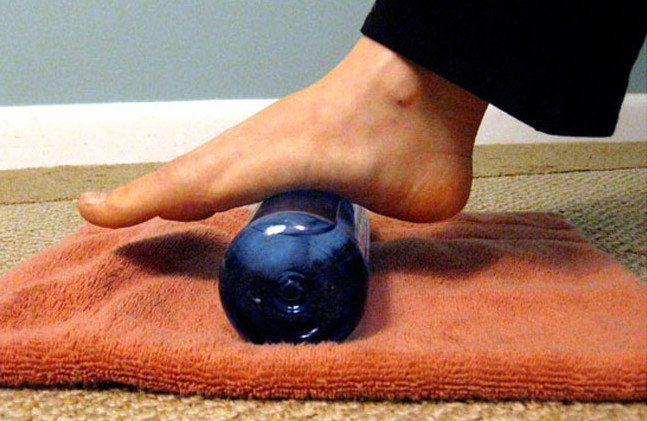In the last 3 years, the concept of a home office has evolved from a luxury to a necessity, a shift that has been more pronounced than ever before. A multitude of individuals are now carving out their own personal workspace within the confines of their homes, seeking solace and tranquility to focus on their professional endeavors. However, amidst the hustle of setting up an efficient workspace, one crucial element often slips through the cracks – lighting.
Lighting, you see, is not merely a functional aspect of a workspace. It is, in fact, a silent yet potent influencer of productivity, mood, and even the health of one’s eyes. The ambiance of a workspace, the very atmosphere that breeds creativity and focus, is significantly dictated by the quality and quantity of light it bathes in.
A well-lit workspace is akin to a fertile ground for the seeds of concentration. It fosters an environment conducive to prolonged periods of focus, mitigating the strain on your eyes and preventing premature fatigue. Conversely, a workspace plagued by poor lighting can be a breeding ground for headaches and other physical discomforts, posing a formidable barrier to productivity.
The character and quality of lighting in your workspace can indeed play a pivotal role in enhancing your productivity. In scenarios where natural light is scarce, artificial lights rise to prominence, illuminating your workspace and compensating for the lack of sunlight.
The choice of lighting also depends on the space available and the vibe you wish to create for your home office. Task lighting, for instance, is a functional and effective choice that adds to the overall comfort of the user, improving focus and reducing strain on the eyes.
In essence, lighting is not just about visibility. It’s about creating an environment that enhances productivity, focus, and comfort. So, as you set up your home office, remember to shed some light on the importance of good lighting. It might just be the key to unlocking a higher level of productivity and comfort in your workspace.
The Benefits of Good Lighting
Good lighting offers numerous benefits beyond just preventing headaches or eye strains that come with poor lightings. It helps to create an environment that fosters creativity and concentration as well as enhancing the overall aesthetics of your workspace. In addition, proper illumination also helps improve mood levels and promote positivity while working. The right type of light compliments décor elements such as wall colors, furniture styles and accessories in your office space thus creating an inviting atmosphere where you are happy to spend time working. Good illumination also presents an opportunity for energy conservation since using natural light during daytime hours reduces electricity usage while benefiting from sunlight health benefits such as production of vitamin D among others.
Types of Lighting
There are three types of lighting: natural lighting, ambient lighting and task-oriented lighting. Natural Lighting: This refers to any form of natural light that enters your workspace through windows or skylights during daylight hours. Natural light offers numerous benefits such as saving on electricity bills by providing free environmental-friendly source of illumination among others. Ambient Lighting: This primary source creates overall illumination within the room which sets the room’s general atmospheric mood. It provides sufficient light to move around the room without straining your eyes but insufficient for detailed tasks. Task Lighting: This type of light is essential when carrying out specific duties that require focused illumination such as reading, writing or other activities dependent on visual accuracy. Task lighting can be in form of desk lamps or overhead lamps that provide concentrated brightness for the requirement of a particular task. Lighting plays a crucial role in creating an ideal home office environment that promotes productivity and overall work satisfaction. The right kind of lighting sources should cater to ambient settings and specific task requirements while keeping your eye health in check.
Types of Lighting
Lighting is a multifaceted element that can be dissected into three primary categories: natural lighting, ambient lighting, and task lighting. Each of these lighting types plays a unique role in shaping a workspace that is not only comfortable but also conducive to productivity.
Natural lighting
Natural lighting, the most coveted form of illumination, is a gift from the heavens. It bathes your workspace in a glow that is not only visually pleasing but also brimming with health benefits. Exposure to natural light during work hours can elevate your mood, spur productivity, and even enhance the quality of your sleep. If your home office is blessed with access to natural light through windows or skylights, it’s crucial to arrange your workspace in a manner that maximizes this exposure. Position your desk in a way that it faces these natural light sources, ensuring that the sunlight doesn’t cause a glare on your computer screen or cast shadows over your workspace.
Ambient lighting
Ambient lighting, on the other hand, is a broad term that encapsulates the overall illumination within a room. It sets the mood for the space and ensures that no dark corners are left lurking or areas with stark contrast between light and dark. In a home office, ambient lighting can be achieved through overhead lights or wall-mounted fixtures. When selecting ambient lighting, consider the benefits of LED bulbs. They consume less energy, have a longer lifespan, and are a more sustainable choice compared to their incandescent counterparts.
Task lighting
Task lighting is the third pillar of home office lighting. It is a focused form of illumination designed to provide additional brightness for specific tasks, such as reading documents, typing, or engaging in detailed work. Desk lamps, which come in a myriad of shapes and sizes, are the most common form of task lighting in home offices. They often feature adjustable arms, allowing you to direct the light precisely where it’s needed. When choosing task lights, look for options with adjustable brightness levels to control the level of illumination as per your requirements.
Choosing the Right Bulbs: LED vs Incandescent bulbs
When it comes to illuminating your home office, the choice of bulbs can make a world of difference. The decision often pivots between LED and incandescent bulbs. While the latter may seem more cost-effective initially, their shorter lifespan and higher energy consumption make them a less sustainable choice in the long run. LEDs, conversely, offer a lifespan that can outlast traditional bulbs by up to 25 times, consume less energy, and emit less heat, making them a safer and more versatile choice for your workspace.
Color temperature
The color temperature of a bulb, denoted in Kelvin (K), is a measure of the warmth or coolness of the light it emits. For a home office, a color temperature between 2700K-4000K is generally recommended. This range provides a comfortable working environment that’s neither too warm nor too cool. Light at the lower end of this range (around 2700K-3000K) will appear warmer and more yellowish, creating a cozy atmosphere for reading or relaxing. Conversely, lights at around 4000k-5000k will appear cooler and brighter, ideal for tasks that require focus.
Lumens
Lumens, on the other hand, denote the brightness level of a bulb. The higher the lumens, the brighter the bulb. For general lighting, bulbs with around 800-1100 lumens are suitable. However, for task lighting, you may need brighter bulbs with up to 1600 lumens. It’s important to remember that lumens aren’t the only factor to consider when choosing a bulb. The color temperature and type of bulb can also affect the perceived brightness of a room.
How to choose the right bulbs
When selecting bulbs for your home office, it’s important to keep in mind what tasks you’ll be performing and how much natural light enters your workspace. If you’re someone who spends a lot of time reading or writing, task lighting is crucial and you should look for bulbs that provide enough brightness without causing eye strain or glare. Additionally, make sure to take into account color temperature as it affects mood and productivity levels; cooler lights are often more stimulating while warmer hues create a relaxing atmosphere. Think about energy efficiency when purchasing bulbs since lighting can account for up to 25% of total energy usage in homes. LEDs are efficient and long-lasting making them an attractive option in the long run despite their higher upfront cost compared to incandescent options which needs replacement more frequently. By considering these factors together when selecting your home office lighting setup you can create a comfortable work environment that promotes productivity while saving on energy costs in the long run.
Placement of Lights
Positioning Overhead Lights
Overhead lights are a staple for any home office. They provide general illumination for the room and a good starting point for lighting your entire workspace. However, it’s important to position them correctly to avoid harsh glare and shadows. First, consider the height of your ceiling. If your ceiling is high, you may need to use a pendant light or chandelier to ensure adequate illumination. For lower ceilings, recessed lighting or flush mount fixtures might be better suited. When positioning overhead lights, aim to light up as much of the workspace as possible without creating glare on computer screens or reflecting in shiny surfaces. Consider placing multiple lights in strategic positions to ensure even illumination throughout the room.
Desk Lamp Placement
Desk lamps, with their targeted task lighting, are a boon for reducing eye strain and fatigue when working at a desk or table. But their effectiveness hinges on their placement. Here are some tips to help you position your desk lamp optimally:
Firstly, take into account the position of your monitor or laptop screen. Adjust the angle and height of your desk lamp to complement this. If you’re a left-handed writer, place your lamp on the right side, and vice versa if you’re right-handed. This helps avoid casting shadows on your work area.
Don’t be afraid to experiment with different heights and angles until you find a comfortable placement that doesn’t create harsh glare. If you’re juggling multiple monitors or screens, strategically place lamps between them to avoid creating shadows.
A pro tip to remember: Opt for adjustable lamps with flexible necks. This allows you to easily tweak their position as needed.
When choosing a desk lamp, ensure it provides enough brightness (measured in lumens) and the right color temperature (measured in Kelvin) for your needs. LED bulbs are generally recommended as they produce less heat than incandescent bulbs and are more energy-efficient.
Another pro tip: To reduce eye strain when reading printed materials, position your desk lamp to shine on the page from behind you.
Don’t forget to utilize table space lamps as well. They can create a relaxed environment and add to the overall lighting setup of your home office. The goal is to create a lighting setup that makes your home office comfortable and efficient. So, take your time, experiment with different setups, and find what works best for you.
Dimmer Switches and Smart Lighting
Now that we have covered the basics of lighting types, bulbs, and placement, let’s dive into the advantages of dimmer switches and smart lighting. These advancements in technology allow for even greater control over the illumination in your home office.
Benefits of Dimmer Switches
A dimmer switch is a small device that can be installed onto your existing light switch to adjust the brightness levels of your bulbs. This feature is particularly useful in a home office because it allows you to create different atmospheres depending on your needs. If you need bright light for reading or working on detailed tasks, you can turn up the brightness to increase visibility. If you need less light for a more relaxed environment, such as taking a break or having a meeting with clients or colleagues, you can dial down the brightness to create a cozier atmosphere. In addition to enhancing ambiance and productivity, dimmer switches can also help save energy and extend bulb life. By adjusting lighting levels based on usage needs, it’s possible to reduce electricity usage by up to 20%.
Smart Lighting Options
Smart lighting goes beyond traditional dimming technology by offering even more control over home office illumination via remote controls or mobile devices. A smart lighting system typically involves LED bulbs with built-in Wi-Fi capabilities that are controlled by an app downloaded onto your phone or computer. With this app, users can quickly adjust settings such as color temperature and brightness without having to manually change bulbs or switches. Additionally, some smart systems come packed with advanced features like voice activation compatibility through virtual assistants like Alexa and Google Home which take convenience one step further by enabling hands-free control over lights.
The Benefits of Smart Lighting
Smart lighting offers a variety of benefits, ranging from mere convenience to increased productivity and energy savings. You can set up schedules or triggers for your lights to turn on or off based on time of day or motion. This feature is particularly useful for those who tend to forget to turn the lights off when leaving their home office. Smart bulbs also offer a range of color temperature options, which can help with adjusting your overall mood and even improve sleep patterns. Warmer colors like amber are typically used in the evening, while cooler colors like blue are ideal for morning productivity boosts. Smart lighting helps save energy and reduce electricity costs by providing real-time data on usage patterns. This information can help you adjust settings to optimize for energy efficiency and cost savings without sacrificing comfort level.
Incorporating dimmer switches and smart lighting into your home office can greatly enhance ambiance, productivity, convenience, and energy savings. By selecting the right combination of lighting types, bulbs, placement and controls you’ll not only create an environment that’s functional but also enjoyable.
Creative Lighting Ideas for Home Offices
Accent Lighting
Home office accent lighting is a great way to add personality and style to your workspace. This type of lighting is designed to highlight specific elements in the room, such as artwork, decorative accents, or even plants. One popular option for accent lighting in home offices is to use LED strip lights. These lights create a soft glow that can be customized to fit the mood of your space. You can use them to highlight a bookshelf or a piece of wall art, or even place them under your desk for a cool effect. Another option for accent lighting is table lamps with colorful lamp shades. These lamps can be used not only as accent pieces but also as task lighting when you need focused light on your workspace. They come in different styles and sizes so you can find one that fits your personal taste and office decor.
Wall Sconces
Wall sconces are another popular choice for home office lighting because they provide both ambient and task lighting at the same time. They are available in many styles from modern to traditional ones, so it’s easy to find one that suits your taste. A popular way of using wall sconces in home offices is by installing them above eye level on each side of the desk area. This provides an even distribution of light across the entire work surface which helps prevent eye strain and fatigue especially during long working hours. Another creative way of using wall sconces is by installing them on bookshelves or display cases in your workspace. This adds depth and dimensionality while providing indirect light that enhances the ambiance of the room.
Floor Lamps
Floor lamps are great if you want both functional and stylish lighting solution for your home office space. They are available in various heights, shapes, colors, and styles so you can pick one that complements your office furniture and decor. A popular way of using floor lamps is by placing them next to an armchair or sofa in your workspace. This creates a cozy reading nook where you can relax and unwind while still being within reach of your work. Another creative way of using floor lamps is by placing them in a corner, either behind or beside the desk area, to provide additional ambient light that enhances the overall mood of the room. Home office lighting doesn’t have to be boring or functional. By applying some creativity and imagination, you can transform your workspace into an inspiring and comfortable environment that boosts productivity while maintaining style and comfort. Whether it’s accent lighting, wall sconces, or floor lamps – there’s always something for everyone when it comes to home office lighting ideas!
Conclusion: Shedding Light on Home Office Lighting
In today’s world, many people spend countless hours working from home in their office. And one of the most important things for any successful home office is good lighting.
Proper lighting can create a more productive work environment and improve mood and overall well-being. In this article, we have discussed some key points to consider when it comes to home office lighting. First, we discussed the different types of lighting that are essential for creating a balanced workspace.
Natural lighting is always preferred but ambient and task lighting are also important factors to consider. Ambient light can help reduce eye strain while task lighting can help boost productivity by highlighting specific areas where work is performed. Then, we explored how to choose the right bulbs for your home office.
LED bulbs are an energy-efficient alternative to incandescent bulbs, and they last much longer too. Additionally, color temperature plays a vital role in setting the mood of your workspace while lumens measure brightness levels allowing you to select an optimal level of light intensity.
We also talked about how placement of lights plays a crucial role in setting up an effective home office space. Overhead lights should be positioned appropriately while desk lamps need careful positioning so as not to cast distracting shadows on your workspace. Dimmer switches and smart lighting options were covered too which can make it easier to adjust light levels according to need without having to switch off/switch on regularly which could cause distraction.
We offered some creative ideas for adding accent lights or wall sconces that bring added warmth and style into your workspace without costing too much money or requiring additional floor space. When it comes down to selecting appropriate light sources for your home office you have many options available at various price points depending on preference – whether it be natural light from windows or artificial sources such as LED bulbs with color temperature controls as well as dimmer switches or smart options.
Just remember to choose what works best for your needs so that you can remain productive and comfortable while working from home.









![MASTERY MART A19 [60-Watt] Led Light Bulbs, E26 Base, 5000K Bright Daylight White, 800 Lumens, CRI 80+, Non-Dimmable, Energy Star, UL Listed, 9W [60W Equivalent]- (6 Pack)](https://m.media-amazon.com/images/I/41btY6yiNtL._SL160_.jpg)














